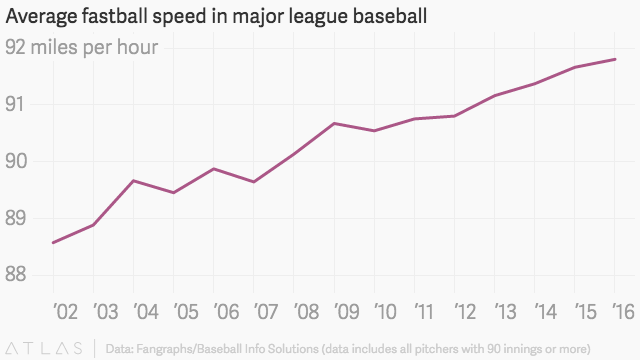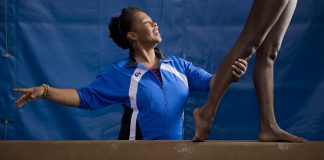Baseball is a clean sport. Whether you’re talking about the flawlessly-edged grass, smooth dirt or immaculate white lines, there’s a neatness and orderliness to the game that you won’t find anywhere else. But the emphasis on precision goes beyond the field of play — it manifests itself in every pitch, every swing, every perfectly-timed leap. Baseball is built on accuracy, which is what makes the insistence on continuing to accept complete chaos in how it operates so perplexing. Only in baseball is every single “play�? subject to an official’s interpretation. And only in baseball can human error so consistently undermine the foundations that the game claims to value.
Baseball’s resistance to change is well-documented. Its unwritten rules seemingly stretch beyond the actual 184-page document, and there’s a clear “this is the way it’s always been�? attitude that inexplicably infiltrates every aspect of it. But traditionalists can’t fight technology forever, and the sooner they give in, the better.
Baseball wasn’t originally intended to include robot umpires, but it needs them now more than ever. With increasing competition for viewers’ attention, baseball can’t afford to lag behind when such an easy fix is available for an issue that often upsets fans and players alike.
Believe it or not, instant replay in baseball has already been around for a decade, with the original 2008 iteration allowing umpires to review fair/foul rulings as well as fan interference on potential home runs. While traditionalists like to whine about it still, we’ve reached a point where a generation of fans grew up with umpires being assisted by technology.
Even with 10 years of review under its belt, bringing in an automated strike zone would turn baseball into something it’s always been reluctant to call itself — a trailblazer. Handing over controls to tech would be a giant leap for any pro league, let alone one steeped in traditions from eras long past. That became clear when Commissioner Rob Manfred weighed in on the issue in an interview with Bob Nightengale of USA Today last year:
“There is a human aspect to that, a work aspect to it, that’s always been an important part of our game. I don’t think you can just jump to the conclusion that if you have the technology to do it that’s the right thing for your product.�?
Manfred’s question about whether or not we really want to remove the “human element�? of umpiring from the game is somewhat jarring. After all, we’re not talking about the athletes. No, we’re talking about those officiating and enforcing the rules of the game. Why would there be passionate arguments against making the game fairer and the rulebook more consistently applied?
ESPN’s Buster Olney reports that players want an automated strike zone and will ask for it in the name of “pace of play,�? which has been the recent buzz-phrase surrounding rule changes in baseball. Olney surmises this could be a give-back of sorts after the 2018 implementation of pitch clocks and limited mound visits at the major league level.
The skill of players will only be underscored by an automated strike zone, and those skills will no longer be subjected to a non-athlete’s opinion. The lone discernible skill that would be suppressed by an automated strike zone is the framing of pitches by catchers — a legitimate thing to consider, of course, and removing it would take away a huge part of catching defense as it’s understood in today’s game. Players like Roberto Perez remain on a big-league roster despite carrying a career on-base-plus-slugging (OPS) percentage of .655. Jason Castro parlayed his pitch-framing performance with Houston in 2016 into a three-year, $24.5 million contract to start at catcher for the Twins prior to 2017, despite three consecutive seasons with an OPS south of .700.
The challenge today’s umpires face is significant, and it’s only becoming more difficult to accurately read and locate pitches from behind the plate manually. Comparing the past decade of data on FanGraphs’ fantastic PITCHf/x tool paints a picture of a gradual uptick in velocity for virtually every pitch type. Ubaldo Jimenez led starting pitchers in average fastball velocity in 2008 at 94.9 MPH. That had ticked upwards by 2015, when the late Yordano Ventura averaged 96.4 MPH. So far this year, Luis Severino of the Yankees is averaging a 97.7 on his fastball.
Take a look at sliders. In 2008, Gil Meche led the league with an 88.3 MPH slider, and Jimenez sat fifth at 85.3. Now, the year is 2018, and Noah Syndergaard is firing sliders at 92.4 MPH. Jimenez’s 2008 mark of 85.3 would put him tied for 22nd in today’s game, along with the feared Mike Foltynewicz of the Braves. The chart below ends in 2016, but note the rapid increase in fastball velocity in just 14 seasons.



Umpiring by the naked eye isn’t getting any easier. In terms of feasibility, we aren’t that far away from robot umpires. While crude in practice, it’s already been done multiple times at the independent level. Since 2006, PITCHf/x was the tool used to collect all of the publicly-available data regarding pitch velocity, location, spin rate, and so forth, but it is also an estimation of sorts: PITCHf/x used cameras to triangulate the location of a pitch just in front of the plate. Beginning in 2017, PITCHf/x was replaced by Statcast, powered by the TrackMan system installed in each MLB ballpark. There were numerous challenges with the new technology in 2017, although many of the issues appear to be resolved through the first six weeks of the 2018 campaign.
Whenever baseball finally decides to come around to this technology, there won’t simply be a clean break from humans to robots. Just like nearly everything else when it comes to rules and major changes in the sport, the league will dip their toe in first. Don’t be surprised if fully-robotic umpires are first tested by allowing managers to challenge ball and strike calls.
Virtually all television broadcasts have their own version of a pitch tracker, from the original ESPN K-Zone that originated in 2001 to the current version of FoxTrax, which as of a few years ago was accurate to within “one inch, or one-third of a baseball�? in real time. The trouble is, baseball seems reluctant to even take this small step, and unless baseball makes an active effort to push this initiative forward, the game will remain stagnant.
The traditionalists will bemoan the shift away from the fabled “human element�? of the game, but why should the players — Major League Baseball’s single greatest asset — be subjected to individual umpire interpretations of the rules?
In a vacuum, it seems silly that Major League Baseball could potentially be willfully avoiding a more accurately officiated game, and therefore one that would better reflect the true talent level of the pitchers and hitters. Tradition is great, and it’s vital to the legacy of baseball, but isn’t it equally as important to ensure that the game of rules, both written and unwritten, has fair rule application across the board, allowing the sport’s immensely talented players to showcase their abilities?
Baseball is the neat and tidy sport, played between the clean white lines. Let’s make the application of the rules neat and tidy, too. Let the robots take over.















